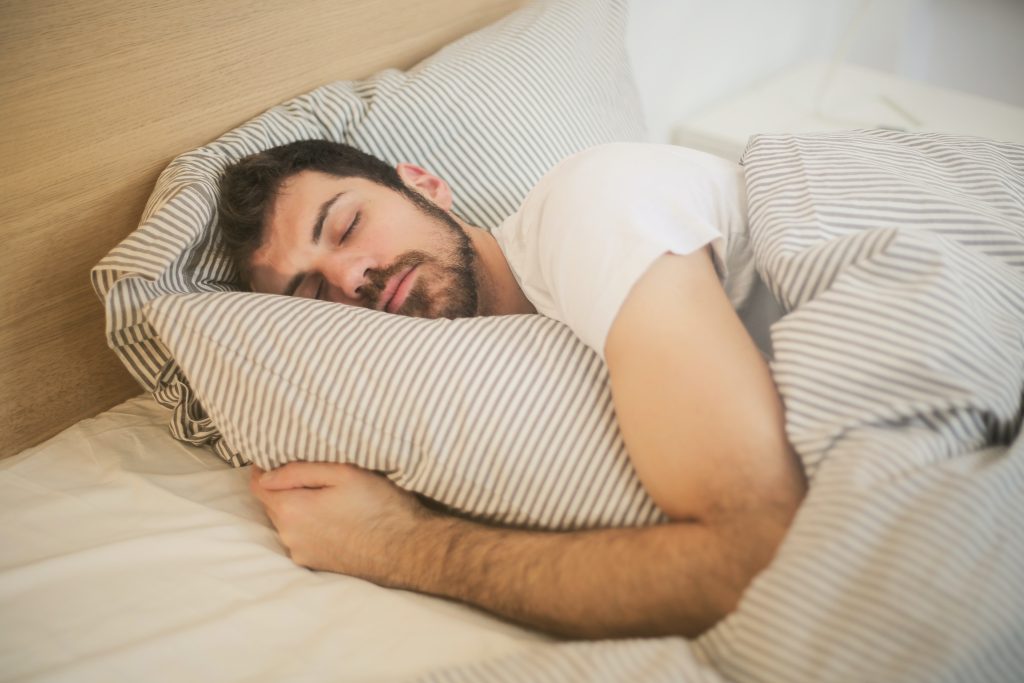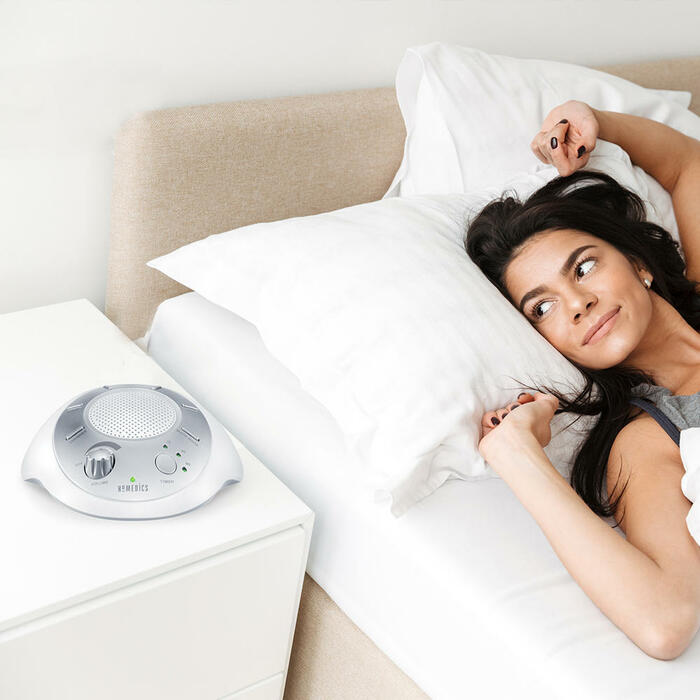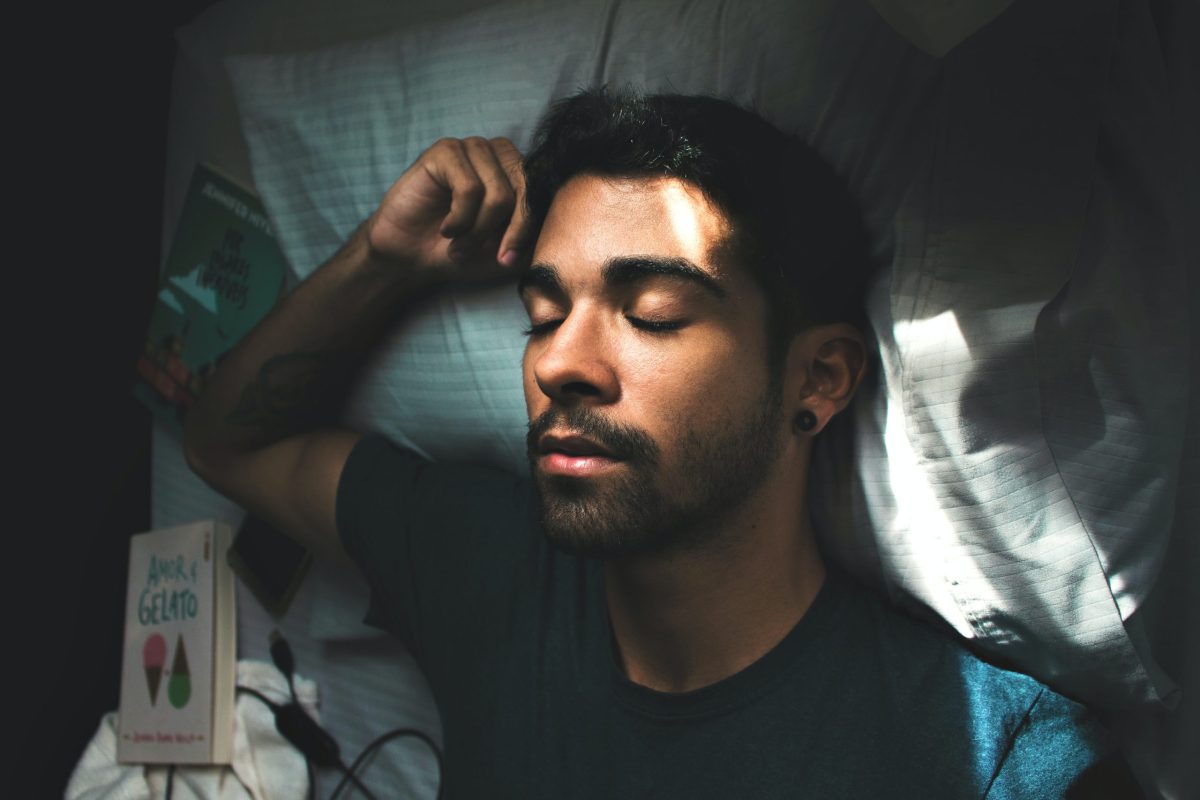What’s the Best Sleeping Position for You?
If your sleeping position isn’t giving your body the proper support, you may find yourself waking up feeling stiff, sore, or like you did a full workout in your sleep.
There’s more to the best sleeping position than simply comfort, and small changes to how you sleep can turn into significant benefits throughout the day.
Learn about what goes into the best position to sleep in and how you can make yourself more comfortable in any position.
Why Should You Worry About Your Sleeping Position?
Sleep is vital to your mental and physical health. Getting enough sleep helps your muscles recover, your body restore its energy, and your brain process the events of the past to prepare for the next day.
The way your sleeping position impacts or supports the natural curvature of your spine is an important element to getting a good night’s sleep and feeling your best the next day. You want your spine to be in a neutral, healthy alignment while you’re sleeping. That means it follows its natural curvature from your neck to your hip joints.
When you achieve this, you help relieve pressure on the soft tissue that pads and supports your spine, according to the Sleep Foundation.
Some Sleeping Positions Are Better Than Others
Proper sleeping posture becomes more important as you get older. A younger person’s body can repair itself more quickly, and that includes muscle and joint recovery from everyday activities, like standing, walking, and carrying things. Good sleeping posture allows your muscles and ligaments to heal, and that’s especially important for your spine.
If you’re not sleeping in the best position, your body will let you know. You’ll wake up feeling sore and stiff, and that pain might stay with you throughout the day. While sleeping posture depends on multiple factors, including using the proper mattress and pillows, your sleeping position is crucial.
It’s important to remember when reading recommendations on finding the best positions to sleep in that the most comfortable and best sleeping position for you depends on your body, your needs, and your preferences.
You’re probably used to sleeping a certain way, so trying new positions will seem uncomfortable at first. But give them a try for a few nights. If you find you can’t fall asleep any way but the way you’ve always liked, you can at least follow the tips below to give your body better support and promote proper sleeping posture in whichever position you prefer.
Best Sleeping Position for Most People: Side Sleeping

The best position to sleep in for most people is on their side. According to a 2017 study in the journal Nature of Science and Sleep, side sleeping is the most common sleeping position among adults. Being such a common natural preference among adults helps make this recommendation easier for many people.
But why is side sleeping better than other positions?
Benefits of Side Sleeping
For many people, side sleeping is the best position for a healthy spine alignment and muscle relaxation. This position doesn’t force unhealthy pressure on your lumbar spine like sleeping on your stomach might, but it also feels more comfortable to some people than lying on their backs.
A 2019 study in BMJ Open found that side sleeping generally protected participants against spinal symptoms, such as pain and stiffness.
Sleeping on your side may also help if you often experience acid reflux—but only if you lie on your left side. According to research in the American Journal of Gastroenterology, lying on your right side increases gastroesophageal reflux, which is the condition that causes heartburn. Meanwhile, lying on your left side reduces the condition.
Making Side Sleeping More Comfortable
- Placing a pillow between your knees can help make you more comfortable, as that padding will prevent your knees from pressing together. It also keeps your hips straight and helps avoid stiffness when you wake up. Without the pillow, your upper leg may pull down and twist your pelvis, moving your spine out of alignment.
- You can also consider putting a body pillow or standard pillow against your back and another against your chest to help keep you in position. You might even find that pressure on both sides reassuring and comforting as you fall asleep.
As you get used to the new position, help yourself fall asleep faster by creating a peaceful, soothing environment in your bedroom. A sound machine can help by blocking out distracting noises from pets, neighbors, and even your sleeping partner. Look for a sound machine with a variety of relaxing sounds and white noise frequencies.
Side Sleeping for Pregnant Women
Side sleeping is particularly recommended for pregnant women, as it helps reduce pressure on your stomach and maintain proper blood flow throughout your body.
Sleeping on your side with your knees bent can be especially helpful as you try to get comfortable while pregnant. This position helps prevent added pressure from the baby on the vein that carries blood between your heart and your legs, according to the National Library of Medicine.
Who Should Avoid Side Sleeping?
If you suffer from shoulder pain or a shoulder or hip injury, side sleeping may not be the best option for you.
Back Sleeping Position

Back sleeping is less popular than side sleeping, but it can still be comfortable—and even beneficial—with the right adjustments.
When you lie on your back, your body naturally distributes its weight evenly. As long as you have a good mattress and the right pillow, this can be a great position for sleeping that lets your body release tension and maintain a neutral spine.
According to the BMJ Open study, sleeping on their backs was better for participants with low back pain than sleeping on their stomachs.
This position is also better for your neck than sleeping on your stomach. When stomach sleeping, your head is turned far to one side or the other for hours at a time, putting strain on the muscles in your neck. It’s no wonder you may wake up feeling sore in the morning. On the other hand, sleeping on your back allows your head to stay straight.
Because your face doesn’t lie against the pillow, people with sensitive skin and those who deal with acne may want to try back sleeping.
In addition to the potential benefits for adults, the American Academy of Pediatrics recommends that it’s safest for babies to sleep on their backs until they’re at least one year old.
Making Back Sleeping More Comfortable
- When sleeping on your back, it’s usually best to use a thinner pillow. Your head only needs to be slightly elevated to maintain a neutral spine. If your head is too high or tilted forward on the pillow, it can strain your neck and back.
- For additional support, you can place a small pillow under the backs of your knees. This helps relieve pressure on your spine, according to the University of Rochester Medical Center.
To help yourself relax in your new sleeping position, consider using an essential oil diffuser to spread your favorite fragrances throughout the room. Choose essential oils with soothing properties—lavender, chamomile, and bergamot are calming essential oils, according to the American Sleep Association.
Who Should Avoid Back Sleeping?
If you’re dealing with a neck injury or neck pain, be especially careful with the pillow you choose for sleeping on your back. Opt for a thinner pillow.
Sleeping on Stomach

For most people, stomach sleeping makes it more difficult to properly support the natural curvature of the spine. It also puts stress on your neck as you twist your head. And some people might find it difficult to breathe comfortably with their noses pressed against a pillow.
For these reasons, stomach sleeping is often considered a worse position than sleeping on the side or back. But at the end of the day, it’s important to get a full night of sleep as often as possible.
Improving Sleep Posture on Your Stomach
If you just can’t seem to get comfortable in another position, all hope is not lost—you can make some simple adjustments to help support proper sleeping posture and reduce the pressure on your spine.
- Put a pillow under your pelvis to help promote proper spinal alignment. It may feel strange at first, but you might also start to enjoy the release of tension on your lower back after a long day on your feet.
- Try using a thinner pillow under your head to prevent your head from tilting upward and straining your neck and shoulders while you sleep.
Does the Best Sleeping Position Change?
The best sleeping position for you might be different, depending on your age and specific goals. Side sleeping can be fussier than other positions, as you may have to arrange the pillows more deliberately to keep yourself in position.
However, a sleeping position that leaves you feeling sore can make it difficult to get out of bed in the morning, especially for older people.
Health conditions affect your ideal sleeping position, too:
- For example, if you deal with chronic lower back pain, it’s best to avoid sleeping on your stomach, if possible.
- Meanwhile, if you’re trying to manage shoulder pain, side sleeping is probably out of the question. In that case, try sleeping on your back.
Of course, if you have an injury that requires you to sleep a certain way, you’ll have to follow your doctor’s instructions—even if you’re uncomfortable at first.
The Best Sleeping Position Lets You Sleep Your Best

The best sleeping position is one that allows you to sleep comfortably while supporting your spinal alignment and reducing pressure and tension in your body. Your ideal position is ultimately up to you, but you can use sound machines, pillows, or any of the tips above to make any of the three positions more comfortable and supportive.
Medical Disclaimer: This content is provided for informational purposes only and not intended to be a substitute for professional medical advice, diagnosis or treatment.
Sources
- What Are the Best Positions for Sleeping? | Sleep Foundation
- Effect of Different Recumbent Positions on Postprandial Gastroesophageal Reflux in Normal Subjects
- Content – Health Encyclopedia – University of Rochester Medical Center
- Identifying relationships between sleep posture and non-specific spinal symptoms in adults: A scoping review – PubMed
- Choosing the Best Sleep Position | Johns Hopkins Medicine

